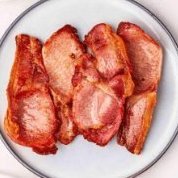Flash Tip
-
Recently Browsing 0 members
- No registered users viewing this page.
-
Topics
-
-
Popular Contributors
-
-
Latest posts...
-
2
Crime Drunk Driver Found Asleep in Car Blocking Pattaya Road
Him in a cell, car in a crusher! -
13
Racial tensions high in Cincinnati as 7th brawl suspect arrested
Another update: Victim in viral Cincinnati street brawl now charged in case, police say An unidentified 45-year-old White man faces disorderly conduct charges for July 26 downtown melee A man whom police identified as a victim in the violent street brawl in Cincinnati that left several people injured last month has been charged, investigators said. The unidentified 45-year-old White man is charged with disorderly conduct, a fourth-degree misdemeanor, for his alleged role in the July 26 melee in the city's downtown. https://www.foxnews.com/us/victim-viral-cincinnati-street-brawl-now-charged-case-police-say Details were sparse in the news article, but elsewhere it was reported he had been charged with disorderly conduct for using a racial slur, not for fighting. -
51
Accident Brit Now Faces 10yrs in Jail After Pattaya Crash Death
Presuming that embassy has the wherewithal to ensure the message gets out to other countries. Let us hope so. I am not sure where the consulate's responsibilities lie, to their citizen, or some neighbouring country's legal system. It appears the guy has a UK criminal conviction.... a pity that doesn't block him from leaving the UK or entering Thailand. -
13
Is Belbien Brand of Zolpidem Available in Thailand?
Two inaccurate posts removed -
27
THAILAND LIVE Thailand Live Thursday 21 August 2025
AI Cameras in Nong Khai Help Police Arrest Rape Suspect Pictures courtesy of Matichon. Police in Nong Khai have arrested a man wanted on rape charges after artificial intelligence (AI) surveillance cameras flagged him as he attempted to cross the border. Full story:https://aseannow.com/topic/1370425-ai-cameras-in-nong-khai-help-police-arrest-rape-suspect/- 1
-

-
1
Crime Brother Stabbed in Family Meal Row in Bangkok
On the bright side it looks like no food got wasted 🤔
-
-
Popular in The Pub










.thumb.jpg.bc523c85a8d558dbc282dca7a2e602c9.jpg)
Recommended Posts
Create an account or sign in to comment
You need to be a member in order to leave a comment
Create an account
Sign up for a new account in our community. It's easy!
Register a new accountSign in
Already have an account? Sign in here.
Sign In Now